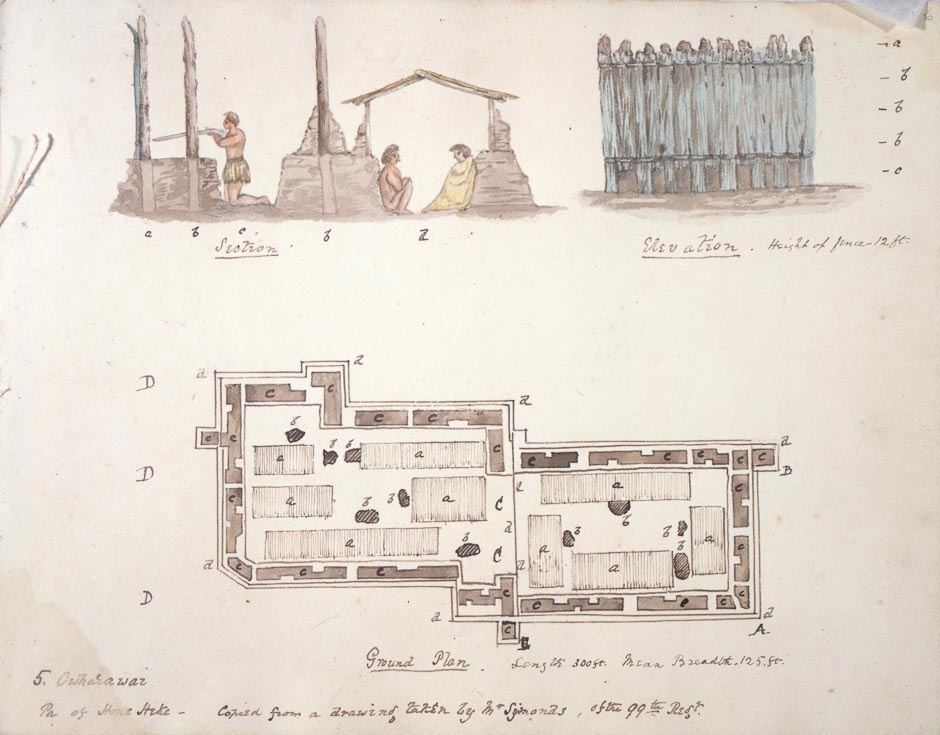
Thomas Hutton, Owhaiawai [sic]. Pa of Hone Heke, copied from a drawing taken by Mr Symonds of the 99th Regt [1845].
With the superior firepower at his disposal, British commander Henry Despard had every reason to feel confident that his assault party would carry the day.
Whereas a steady stream of intelligence had been received before the battle of Puketutu, Despard knew little about the nature and extent of the defences at Ōhaeawai. The decisions he made that day were based on what he could observe and the flax matting hung over the outer fence (pekerangi) blocked his view.
The Māori defenders could fire and reload in relative safety. The design also allowed them to fire on the enemy from a variety of angles so as to inflict maximum damage. Ōhaeawai’s inner palisade was 3 metres high and built using puriri logs. These were strong and didn’t splinter easily. The smaller cannons used made little impact. Insufficient 32-pounder balls were fired to cause significant damage.

Community contributions